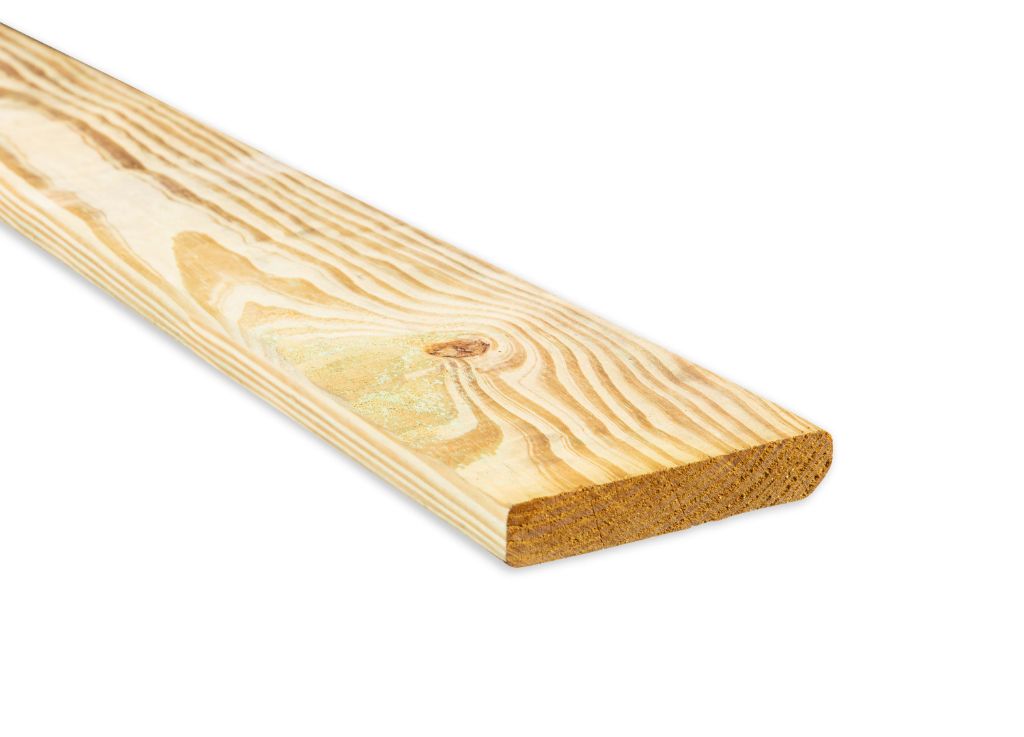When it comes to pressure treated lumber, people often wonder whether #1 or #2 grade lumber is the better choice for their project. The main differences between #1 and #2 pressure treated lumber have to do with the amount of knots, checks, wane, and other natural characteristics in the wood. Here’s a quick overview of how #1 and #2 grades compare:
Page Contents
#1 Pressure Treated Lumber
#1 grade pressure treated lumber has the fewest natural defects and blemishes. Here are some key facts about #1 lumber:
- Has fewer and smaller knots than #2 grade
- Very limited wane (bark along the edges) allowed
- Few minor checks or splits allowed
- No major defects like large knots or excessive warping
- Higher quality appearance with straighter and more uniform boards
#1 grade pressure treated wood is ideal for visible projects where appearance is important, like decks, fencing, and outdoor structures. The nicer looking boards make for a more attractive finished product.
#2 Pressure Treated Lumber
#2 grade pressure treated lumber has more natural imperfections than #1 grade. Here are the characteristics of #2 lumber:
- Moderate sized sound knots are allowed
- Some wane along board edges is permitted
- Minor splits, checks, and streaks allowed
- Slightly more variation in wood grain and color
- May be slightly more warped than #1 grade
#2 grade pressure treated wood works well for projects where appearance is less important. It’s a good choice for structural framing, sills, fence posts, landscaping projects, and other applications where the lumber won’t be highly visible. The cost is also lower than #1 grade lumber.
Comparing the Durability
Despite differences in appearance, #1 and #2 pressure treated lumber are equal when it comes to durability and lifespan. The pressure treating process infuses preservative chemicals deep into the cellular structure of the wood, protecting against rot, fungal decay, and insects. Both #1 and #2 grades are treated to the same standards and will last for decades in outdoor environments.
Lifespan
When properly installed and maintained, #1 and #2 pressure treated lumber can last for 30 years or longer. Lifespan depends on factors like:
- Quality of the installation
- Climate and exposure to weather
- How often the wood is sealed or finished
- Whether the wood contacts soil or sits on the ground
With periodic maintenance like cleaning and refinishing, pressure treated lumber can outlast its original lifespan by many years. The preservatives protect the wood itself from decay, so as long as the structural integrity remains sound, the lifespan can be extended.
Preservative Retention
All pressure treated lumber must meet minimum retention requirements for preservative chemicals set by the American Wood Protection Association (AWPA). The retention level ensures deep penetration into the wood cells. For above ground projects, the retention is 0.25 lbs per cubic foot. For ground contact, it increases to 0.40 lbs per cubic foot. Since both #1 and #2 grades are treated to these same standards, they have equal preservative retention and durability.
Cost Comparison
#1 grade pressure treated lumber is generally 15-20% more expensive than #2 grade for the same type of wood. Here are some example costs for pine lumber:
| Lumber | #1 Grade Cost | #2 Grade Cost |
|---|---|---|
| 2x4x8 Pine | $9.25 | $7.85 |
| 2x6x8 Pine | $13.40 | $11.55 |
| 5/4×6 Decking Pine | $1.15 lin. ft. | $0.99 lin. ft. |
This premium cost for #1 grade lumber reflects the higher quality appearance with fewer defects. So you’ll pay more for looks. But the durability and lifespan are equal between the two grades.
Best Uses for Each Grade
Here are some examples of where each grade of pressure treated lumber is best used:
#1 Grade Lumber Works Well For:
- Decks
- Porches
- Patios
- Walkways
- Fencing
- Outdoor furniture
- Retaining walls
- Planter boxes
Any project where you want less visible blemishes and a more attractive finished look. The added cost buys you a nicer appearance.
#2 Grade Lumber is Ideal For:
- Framing lumber (hidden from view)
- Structural supports like posts, beams, and joists
- Stair stringers
- Sill plates
- Landscaping timbers and edging (partially buried)
- Utility projects like sheds, treehouses, and compost bins
Any structural use where appearance doesn’t matter. #2 grade wood provides an affordable and durable option.
Conclusion
For outdoor projects where the wood will be visible, upgrading to #1 grade pressure treated lumber is worth the extra cost. You’ll have boards with a nicer looking surface that is more consistent in appearance. For structural applications where the wood is hidden or appearance doesn’t matter, #2 grade lumber will provide equal durability and lifespan at a lower cost. Consider how much visible wood there will be, your budget, and the structural needs when deciding between these two common grades of pressure treated lumber.
